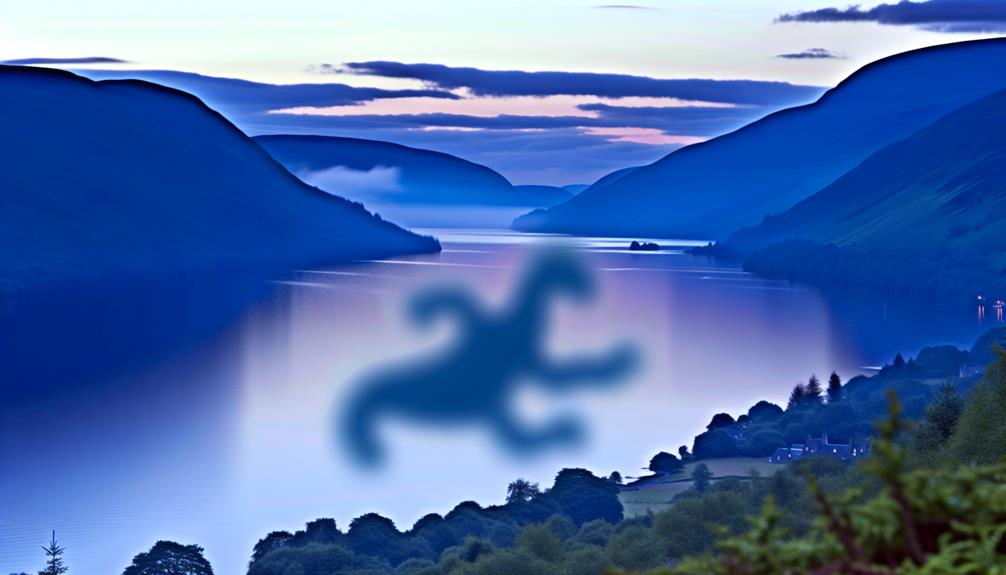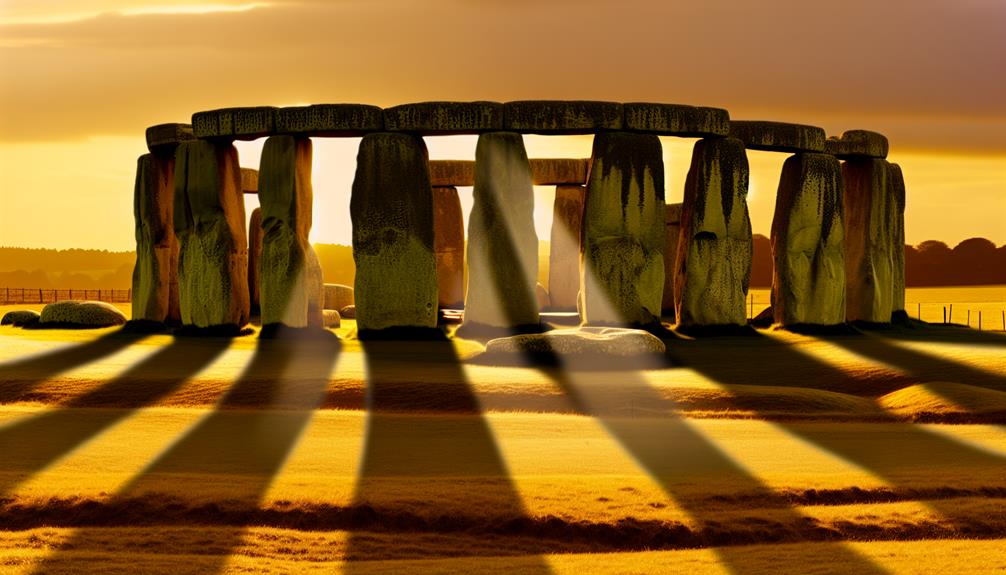Nestled in the picturesque landscape of Japan, Mount Fuji commands attention as a symbol of both nature's grandeur and cultural significance. Its majestic silhouette and volcanic origins have long captured the imagination of visitors worldwide, drawing them to explore its rugged terrain and experience the allure of its summit. However, beyond its physical beauty lies a deeper connection to Japan's spiritual heritage and historical narratives, making a journey to Mount Fuji not just a climb but a profound encounter with the essence of Japanese identity.
Key Takeaways
- Rich history and cultural significance in Shinto beliefs.
- Highest mountain in Japan at 3,776 meters.
- Various climbing routes with differing difficulties.
- Peak visiting times in July and August for clear views.
- Local cuisine, souvenirs, and safety precautions for hikers.
History and Cultural Significance
Mount Fuji in Japan holds a rich history and profound cultural significance that has influenced the country's identity for centuries. The historical influences of Mount Fuji can be traced back to ancient times when it was considered a sacred site in Shinto beliefs. The mountain has been a source of inspiration for artists, poets, and writers, capturing its beauty and spiritual essence in their works.
Traditional ceremonies have also played a significant role in the cultural significance of Mount Fuji. One such ceremony is the annual pilgrimage that takes place during the summer months, where thousands of people climb the mountain to pay their respects to the deities believed to reside there. This tradition has been passed down through generations and continues to be a meaningful practice for many Japanese people.
Moreover, Mount Fuji has been a symbol of resilience and strength for the Japanese people, particularly in times of adversity. Its majestic presence has served as a source of comfort and inspiration during challenging periods in the country's history.
Geographical Location and Topography
Located in the Chubu region of Honshu, Japan, the prominent peak of Mount Fuji rises majestically as the highest mountain in the country. Its geographical location is characterized by a volcanic terrain, a result of its origins as a stratovolcano. Mount Fuji's symmetrical cone is a striking feature, formed by layers of hardened lava, ash, and volcanic rocks from past eruptions. This volcanic terrain not only adds to the mountain's allure but also presents unique challenges for climbers.
One of the key factors that climbers face when ascending Mount Fuji is the altitude challenges. At 3,776 meters (12,389 feet) above sea level, the summit of Mount Fuji stands as a significant goal for hikers and mountaineers. The altitude poses difficulties such as decreased oxygen levels, which can lead to altitude sickness if climbers do not acclimatize properly. It is essential for those attempting the climb to be aware of the potential risks associated with high altitudes and to take necessary precautions.
Climbing Routes and Difficulty Levels
The various climbing routes on Mount Fuji offer a range of difficulty levels, catering to both novice hikers and experienced mountaineers seeking a challenging ascent. Each route presents its own set of challenges and rewards, ensuring that climbers of all skill levels can find a path that suits their abilities and goals.
Here is an overview of the different routes:
- Yoshida Trail: This is the most popular route, known for its gentle slopes and well-maintained trails. It is suitable for beginners but can get crowded during the peak climbing season.
- Subashiri Trail: This route is slightly more challenging, featuring steeper sections and rocky terrain. It offers a more secluded experience compared to the Yoshida Trail.
- Gotemba Trail: Considered one of the most challenging routes, it is less crowded but requires a higher level of fitness and mountaineering skills due to its steep and rugged nature.
- Fujinomiya Trail: This route is known for its direct approach to the summit, making it a favorite among experienced climbers. It offers stunning views but demands proper equipment essentials and training requirements.
When setting out on a Mount Fuji climb, climbers must be prepared with the right equipment essentials and training requirements. Additionally, being aware of the ever-changing weather conditions and following safety precautions is essential for a successful ascent.
Best Times to Visit
Best visiting times for Mount Fuji depend on the prevailing weather patterns and seasonal variations in climatic conditions. The peak season for visiting Mount Fuji is during the summer months of July and August when the weather is extremely important and the skies are clearer, offering the best views of the majestic peak. During this time, the temperatures at the summit are usually around 5 to 10 degrees Celsius, making it more comfortable for climbers. However, this popularity also means that the trails can get quite crowded, so if you prefer a quieter experience, consider visiting during the shoulder seasons of late spring or early autumn.
Weather conditions play a vital role in determining the best times to visit Mount Fuji. It is essential to check the weather forecast before planning your trip, as visibility can be severely limited during periods of fog, rain, or snow. Winter should generally be avoided due to the extreme cold, heavy snowfall, and increased avalanche risk. Spring can be a beautiful time to visit with cherry blossoms in bloom, but be aware that the weather can be unpredictable, and there may still be snow at higher elevations.
Activities and Attractions
Exploring Mount Fuji presents a plethora of enchanting activities and attractions for visitors seeking to immerse themselves in the awe-inspiring natural beauty and cultural significance of this iconic Japanese landmark. Here are some of the top activities and attractions that make a visit to Mount Fuji truly unforgettable:
- Hiking Trails: Mount Fuji offers several hiking trails catering to different skill levels, allowing visitors to experience the majestic mountain up close. The Yoshida Trail is the most popular route, known for its scenic views and well-maintained paths. For a more challenging adventure, the Subashiri Trail provides a steep ascent through diverse terrain. Those seeking a less crowded path may opt for the Gotemba Trail, offering a quieter journey with stunning vistas. To conclude, the Fujinomiya Trail is renowned for its accessibility and beautiful natural surroundings.
- Photography Spots: Mount Fuji boasts numerous photography spots that capture its beauty from various angles. The Chureito Pagoda, with its iconic view of the mountain framed by cherry blossoms, is a favorite among photographers. The shores of Lake Kawaguchi offer mirror-like reflections of Mount Fuji, creating picture-perfect moments. Additionally, the Arakurayama Sengen Park provides a stunning panorama of the mountain against a backdrop of vibrant landscapes. To sum up, the Oishi Park offers a blend of colorful flowers and the mountain's grandeur, ideal for photography enthusiasts.
Local Cuisine and Souvenirs
Amidst the enchanting allure of Mount Fuji, exploring the local cuisine and selecting unique souvenirs serve as integral components of the immersive experience offered by this iconic Japanese landmark. Food markets near Mount Fuji offer a delightful array of traditional Japanese dishes that cater to every palate. Visitors can savor local specialties like Hoto, a hearty noodle soup, or Fuji-grown fruits such as peaches and plums known for their exceptional flavor.
Handicraft shops around Mount Fuji provide an opportunity to take home a piece of its cultural essence. From delicate ceramics reflecting the region's artistry to intricately designed wooden items symbolizing Japanese craftsmanship, these souvenirs encapsulate the spirit of Mount Fuji. Additionally, the shops offer a selection of unique items like Mount Fuji-themed trinkets, perfect for remembering the experience.
Exploring the food markets allows visitors to engage with the local community, experiencing firsthand the flavors that define the region. Likewise, browsing through the handicraft shops offers a glimpse into the traditional art forms that have been passed down through generations near Mount Fuji. These interactions not only enrich the visit but also provide a sense of connection to the heritage of this revered landmark.
Tips for a Safe and Enjoyable Visit
Ensuring a safe and enjoyable visit to Mount Fuji involves meticulous planning and adherence to essential guidelines for exploring this iconic Japanese landmark. When setting out on your journey to Mount Fuji, consider the following safety precautions and hiking essentials:
- Proper Gear: Make sure you have sturdy hiking boots with excellent traction to navigate the varied terrain. Dress in layers to accommodate the changing weather conditions, including a waterproof jacket and moisture-wicking clothing.
- Hydration and Nutrition: Carry an ample water supply to stay hydrated throughout your trek. Pack high-energy snacks like nuts, energy bars, and fruits to fuel your adventure.
- Acclimatization: Take your time to acclimate to the altitude as you ascend Mount Fuji. Avoid ascending too quickly to prevent altitude sickness and allow your body to adjust gradually.
- Emergency Preparedness: Pack a first aid kit with essentials like bandages, pain relievers, and blister patches. Additionally, carry a flashlight, a map, and a fully charged phone for emergencies.
Frequently Asked Questions
Can You See Mount Fuji From Tokyo?
When considering the visibility of a distant landmark from a city, several factors come into play. In the case of Tokyo skyline, the distance between the city and Mount Fuji could potentially affect the visibility.
Understanding the best viewpoints within Tokyo that offer clear sightlines towards Mount Fuji is important for photography enthusiasts seeking excellent photography opportunities.
This analysis will further explore the interplay of topography and atmospheric conditions on visibility.
Are There Any Hot Springs Near Mount Fuji?
Hot spring resorts near volcanic formations offer visitors a unique opportunity to relax and rejuvenate in naturally heated pools. These destinations often capitalize on the geothermal activity in the region to create therapeutic spa experiences.
The proximity to volcanic regions guarantees that the mineral-rich waters provide numerous health benefits. Exploring hot spring resorts near volcanic areas can provide a memorable and restorative experience for travelers seeking relaxation and wellness.
Is It Possible to Visit Mount Fuji in Winter?
During winter, visiting Mount Fuji offers unique winter activities such as snowshoeing and ice climbing.
The snow-capped landscape provides stunning photography opportunities, especially during sunrise and sunset.
Despite the cold temperatures, the serene beauty of the mountain in winter attracts adventurers and photographers alike.
Winter visitors can experience a different side of Mount Fuji's majesty, creating memorable moments amidst the snowy peaks.
Are There Restrictions on Drone Usage Near Mount Fuji?
Drone regulations around scenic views like Mount Fuji are strictly enforced to safeguard the environment, maintain public safety, and preserve the tranquility of the area.
Authorities typically prohibit drone usage near such iconic landmarks to prevent disturbances to wildlife, visitors, and the landscape. These restrictions aim to uphold the pristine natural beauty of the region and safeguard the experience for all who come to appreciate its splendor.
Can You Spot Wildlife Around Mount Fuji?
In the lush landscapes beyond Mount Fuji, opportunities for wildlife photography abound, showcasing the delicate balance of diverse animal habitats.
Conservation efforts in these areas support ecotourism, offering glimpses of native species in their natural environments.
Engaging in this form of exploration not only provides immersive experiences but also contributes to the preservation of these crucial ecosystems.
Wildlife enthusiasts can marvel at the intricate web of life that thrives in these picturesque surroundings.
Conclusion
To sum up, Mount Fuji in Japan stands as a timeless symbol of resilience and beauty, offering visitors a unique blend of natural wonder and cultural significance.
With its towering presence and picturesque views, Mount Fuji is a must-visit destination for those seeking a once-in-a-lifetime experience.
Its majestic summit, steeped in history and spiritual significance, serves as a beacon of inspiration for all who venture to its peak.

